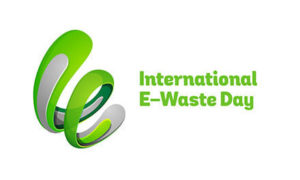Événement Journée mondiale
International E-Waste Day 2021
14 October is International E-Waste Day, which will focus on the crucial part each of us has in making circularity a reality for e-products.
About E-Waste
According to the United Nations, in 2021 each person on the planet will produce on average 7.6 kg of e-waste, meaning that a massive 57.4 million tons will be generated worldwide. Only 17.4% of this electronic waste, containing a mixture of harmful substances and precious materials, will be recorded as being properly collected, treated and recycled. Many initiatives are undertaken to tackle this growing concern, but none of them can be fully effective without the active role and correct education of consumers.
The International Telecommunication Union (ITU) also indicates that e-waste is one of the largest and most complex waste streams in the world. According to the Global E-waste Monitor 2020, the world generated 53.6 Mt of e-waste in 2019, only 9.3 Mt (17%) of which was recorded as being collected and recycled. E-waste contains valuable materials, as well as hazardous toxins, which make the efficient material recovery and safe recycling of e-waste extremely important for economic value as well as environmental and human health. The discrepancy in the amount of e-waste produced and the amount of e-waste that is properly recycled reflects an urgent need for all stakeholders including the youth to address this issue.
International E-Waste Day
14 October is International E-Waste Day and, this year, it will focus on the crucial part each of us has in making circularity a reality for e-products.
The coronavirus pandemic has had a perceptible effect on our use of electronics and digital solutions, with people relying on e-products to keep them connected with work colleagues and in their family and social life. This has not only meant a greater use of technology in the home, it has also lead to an increase in the consumption of e-products. According to a study commissioned by the European Parliament, in European Union the demand for personal computers and tablets rose by 4.6% year-on-year until December 2020. In this context it is even more important to make users aware of the options that exist for their end-of-life equipment.
Global E-Waste Iconathon 2021
The Generation Connection Global E-waste Iconathon – the “E-waste Iconathon” aims to build awareness and strengthen youth participation and awareness around the global e-waste challenge. The competition addresses the need for a universal icon that can be used around the world to signify the take-back and collection of e-waste for the purpose of recycling.
The winning icon will be available without restrictions for use by any organization or individual in the public domain. For example, the icon could be used by retailers to indicate that they take back used electronics and e-waste, or in a school to label an e-waste disposal box in an e-waste drive.
The Iconathon was launched on International E-Waste Day on 14th October 2021. The winners will be announced at the ITU Generation Connect Global Youth Summit preceding the World Telecommunication Development Conference (scheduled to take place on 4-5 June 2022).
Addressing the Environmental Risks of E-Waste from Geneva
E-waste can be toxic, is not biodegradable and accumulates in the environment, in the soil, air, water and living things. A 2019 joint report “A New Circular Vision for Electronics – Time for a Global Reboot” calls for a new vision for e-waste based on the circular economy concept, whereby a regenerative system can minimize waste and energy leakage. The report supports the work of the E-waste Coalition, which includes the ILO, ITU, UNEP, UNIDO, UNITAR, UNU and Secretariats of the Basel and Stockholm Conventions. The organisations and many more in Geneva are actively working to reduce the environmental and health risks of e-waste. Learn more in our thematic page below.

